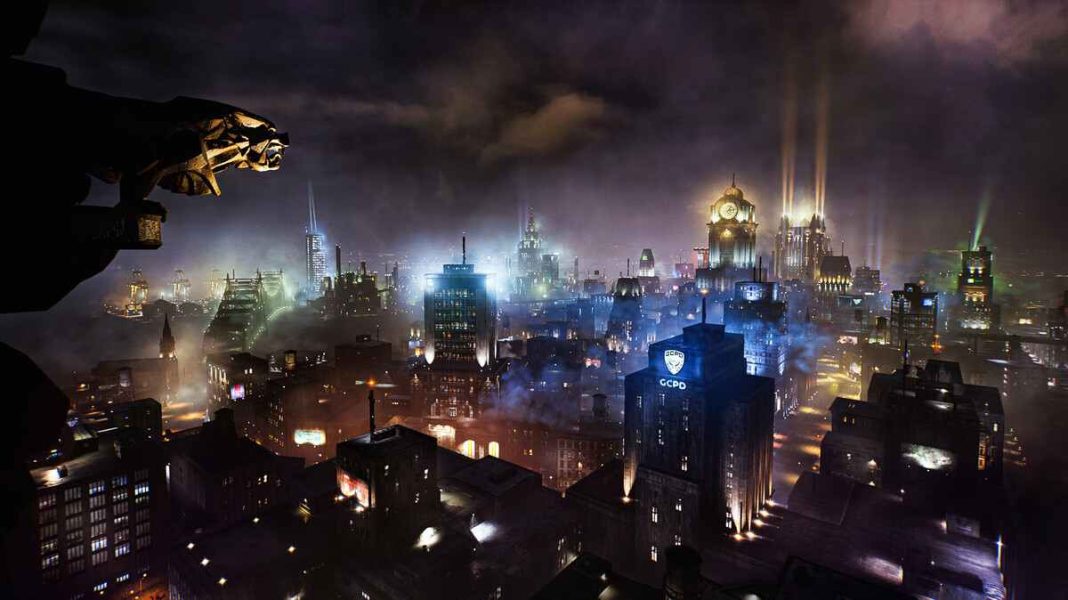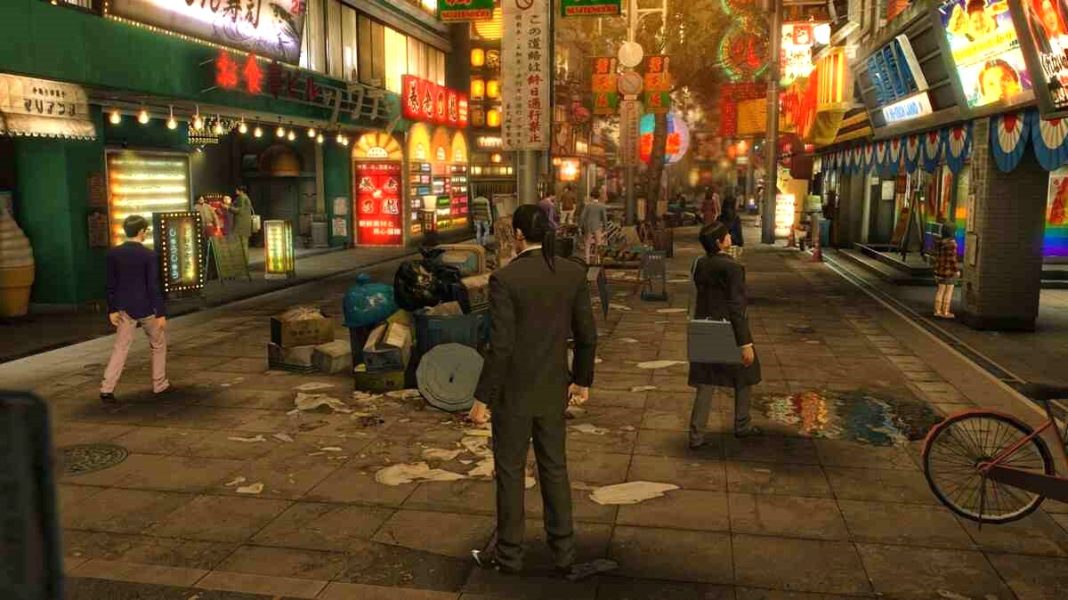Gotham City was introduced to the world in 1940. Being the hometown of Bruce Wayne/The Batman, Gotham is filled to the brim with crime and all kinds of psychos running around. Throughout the years, Gotham City has seen many renditions across all sorts of media. From comics to video games to movies, Gotham City has been imagined, built, reimagined, and rebuilt countless times at this point. One thing that has remained constant across all its iterations and evolutions is the rain-drenched streets of this city, which pretty much never see the light of the day. Gotham is dark and gloomy, with danger lurking around every corner. Every person you meet here can be a bad apple, and every step you take can land you in trouble. It’s not a very welcoming place despite its modern architecture and its series of coffee shops and diners.
While the GCPD does try to clean up the streets the best they can, their corruption and the prowess and numbers of all types of bad folk running across Gotham make it very difficult for them. That’s where Batman comes in. With his mastery of multiple fighting styles, his near-unlimited wealth, and his smarts, he takes on these threats like their child’s play and tries his best to keep the streets of Gotham safe and clean. In this instance, however, Batman is dead, and it’s in the hands of Batgirl, Red Hood, Nightwing, and Robin to follow in his footsteps and keep Gotham City safe. That’s “Gotham Knights,” which takes place in Gotham City, which you are free to explore. If you wish to learn more about the game itself, you can check out the review on our site. Here, we’ll be talking about the world of “Gotham Knights,” the largest iteration of the city we’ve seen in any media, and taking a tour of it, exploring its nooks and crannies.
The city is divided into five islands (technically 4), each trying to bring its own vibe while maintaining the aesthetics and architecture across the board. The inspiration is very neo-noir, as said by the developers themselves, and that holds true. While the city is not very interactive and doesn’t feel lived in, with a minimal number of NPCs walking the streets and not reacting too much, it doesn’t take away from the fact that it’s a well-crafted modern metropolis and can look stunning at times. Besides, if you like excuses, then you can make one here and say, “Who’d wanna walk the streets of Gotham in the middle of the night?” But that’s not the point; the game has its own problems, and the city may not feel lived in, but it is stunning, complex, well-crafted, and definitely one of the most accurate renditions of what Gotham City would look like if it were an actual place. Without further ado, let’s take a closer look at the different districts of Gotham City as they are represented in “Gotham Knights.”
Lower Gotham
Lower Gotham is divided into two districts, The Cauldron and Southside. The Cauldron looks and feels like an older part of Gotham that has existed for years, and with time, a new layer of the city was built on top of it. Borderline looking like the slums, The Cauldron is packed with eateries along its cramped alleys and roads. It doesn’t look like a very safe place to visit during the night, but then again, which part of Gotham does? The Cauldron, all things considered, seems like a low-income area that rests below the high-rise building of Gotham with its murky streets and shady alleys.
Southside, on the other hand, is what you’ll call the industrial area/ the port of Gotham. A few industrial buildings like Cobblepot Steel, Ocean Chemicals, and Waynetech Tower dominate the skyline here, as the rest of the buildings are lower to the ground. The area as a whole has wide open roads, gas stations, and factories. While Dixon Docks acts as Gotham’s port to trade goods from across the world. The Southside as a whole is industrial and very polluted, and it doesn’t seem like a place where you’d want to spend a lot of time. That’s the gist of lower Gotham, as you’d expect. A dock area in combination with what seems like the slums of Gotham, not a very welcoming or inviting place overall.
Historic Gotham
Historic Gotham is also divided into two districts, The Financial District and Old Gotham. The Financial District is where Gotham starts to shine with its high-rise buildings, and the neon-drenched architecture really shows. The Union Belfry station stands tall in this area with its famous clocktower, while other buildings like the GCN Tower and the Elliot Center dominate the skyline alongside the Belfry. Everything has a certain pop and glow to it here, and as the name suggests, the Financial District is as clean as it can be, with wide roads and train tracks above the roads. You can also visit the Iceberg Lounge, run by none other than Oswald Cobblepot if you want to take a break and are feeling brave enough. The architecture here is still not modern enough, with brick buildings and old churches, but it looks cool as most, if not all, of it, is covered in neon signs, and the smoke covering them makes the color pop a lot more. The Financial District also has a bridge running towards the ocean that connects it to Blackgate Prison; you don’t wanna go there as it houses the craziest and most dangerous criminals of Gotham City.
Old Gotham, on the other hand is, as the name suggests, Old Gotham. Home to the GCPD headquarters and a massive cathedral, Old Gotham is by far the most rustic and Victorian-ish part of Gotham City. With next to no skyscrapers here, it’s kinda contrasting when compared to The Financial District as they both exist side by side but nonetheless share a symmetry between them. All things considered, historic Gotham is where Gotham City really starts showing signs and becomes interesting. Its rustic architecture blends perfectly with more modern technologies and designs, and it brings with it a certain pop that Lower Gotham lacks.
Historic Gotham and New Gotham are connected to each other by a small island called Tricorner Island. There’s nothing interesting to see here as it looks like another industrial/dock zone with the massive Kane Industries building governing the island. It seems to be ripe with criminal activity as well, so let’s move away from this place as quickly as we can.
New Gotham
New Gotham is packed with three districts, Bowery, Otisburg, and West End. New Gotham is where we start to see more modern architecture in what seems to be the downtown area of Gotham. The Bowery, for instance, is chock full of clubs and bars where you can go to get drunk, video game stores, hotels, and diners. The Bowery is also home to the famous Monarch Theatre and the Knightsdome Sports Complex. Overall, The Bowery is a place that is a mix of both authentic and modern Gotham. Otisburg, on the other hand, is where you truly start seeing the modern side of Gotham City, with tall glass buildings dominating the skyline and more buildings being constructed alongside them. The Wayne Tower stands tall here, keeping watch across the city as trains and traffic cover the streets below. Finally, West End walks on Otisburgs shoes, with The GCPD Hospital and the Gotham Gazette office being the landmarks you’ll find there. West End seems like a blend of both office spaces and residential complexes as the skyline starts to lower and more houses and hotels start popping up. New Gotham is an island with a lot of variety and lots of sights to see. From its high-rise buildings to its local eateries, New Gotham is a perfect blend where both official and residential folks coexist together.
North Gotham
Finally, North Gotham has two districts, Gotham Heights and Bristol. Gotham Heights is what you’d call the suburban area of Gotham City. Rich in what seems like culturally diverse stores, Gotham Heights is the home of Gotham City University and is, for the most part, a quaint area that looks comfortable and feels safe. Gotham Heights and Bristol are separated from each other thanks to Robinson Park, which is literally a giant park with the Saul Erdel Planetarium in its center and the Gotham City Reservoir in the background. Finally, we have Bristol, which is a really small area with not much to see and say unless you want to visit Gotham City Cemetery. Bristol, all in all, is full of crime and definitely not a place you should visit at night or during the day even. The main draw of Bristol is the now-abandoned Arkham Asylum, and need I say more? It looms eerily, covered in fog, and looks as menacing and haunted as it can, but it’s Arkham Asylum; what else would you expect?
Final Words
That has been a brief tour of Gotham City from “Gotham Knights.” I’d like to say a lot more here, but since the world is so empty, I don’t know what else to say. The only reason I wanted to cover this as a separate topic is because of how beautiful this world looks and how true a rendition of Gotham City it is. The game has its own issues, as we discussed in our review, but that doesn’t take away from how well-crafted its world is. I just wish they had done more with it, but I digress. If you wanna beat up punks on the street or even tussle with the GCPD, as they are not very friendly here, then go and explore the world of “Gotham Knights.” Thanks for reading.
See more: ‘Gotham Knights’ Review And Gameplay, Explained: What Makes ‘Gotham Knights’ Worth Playing?


